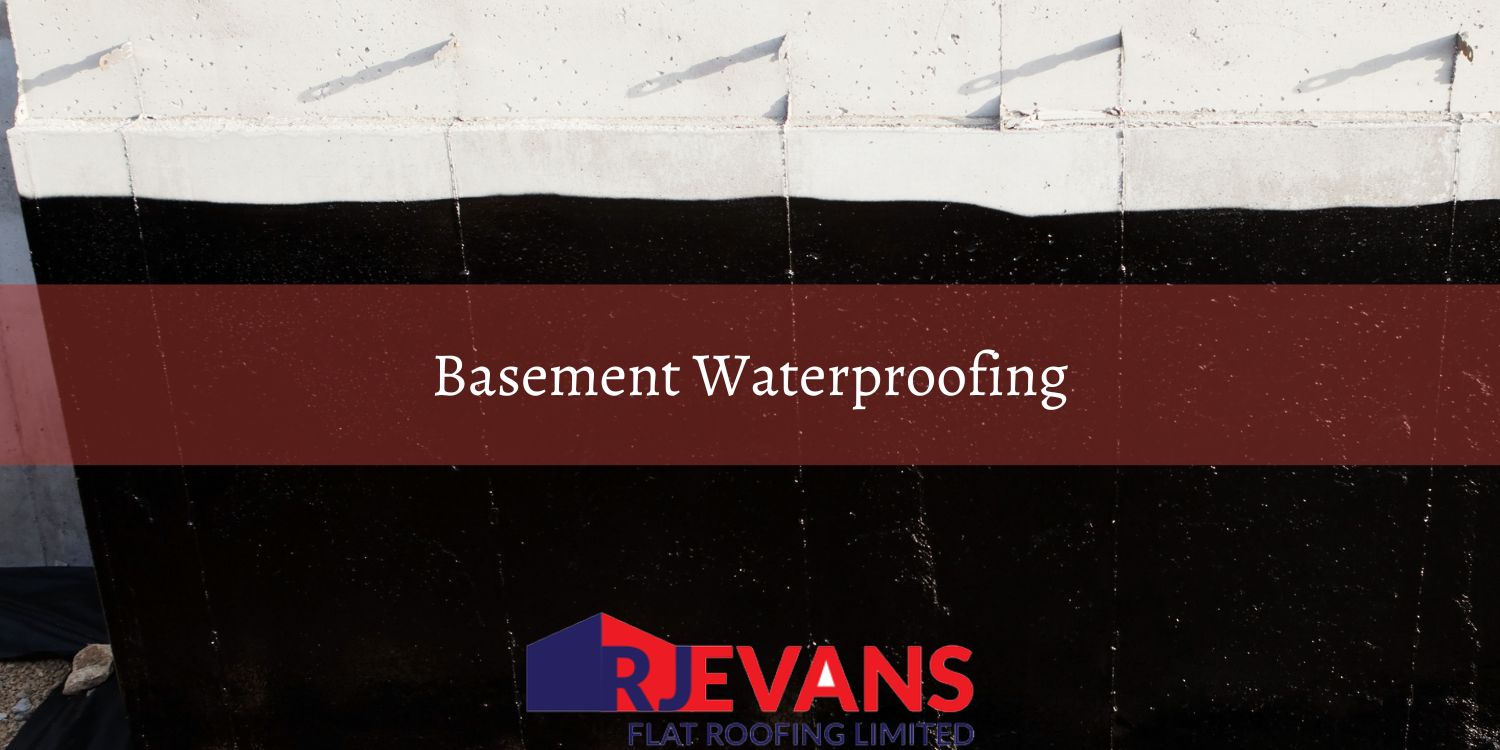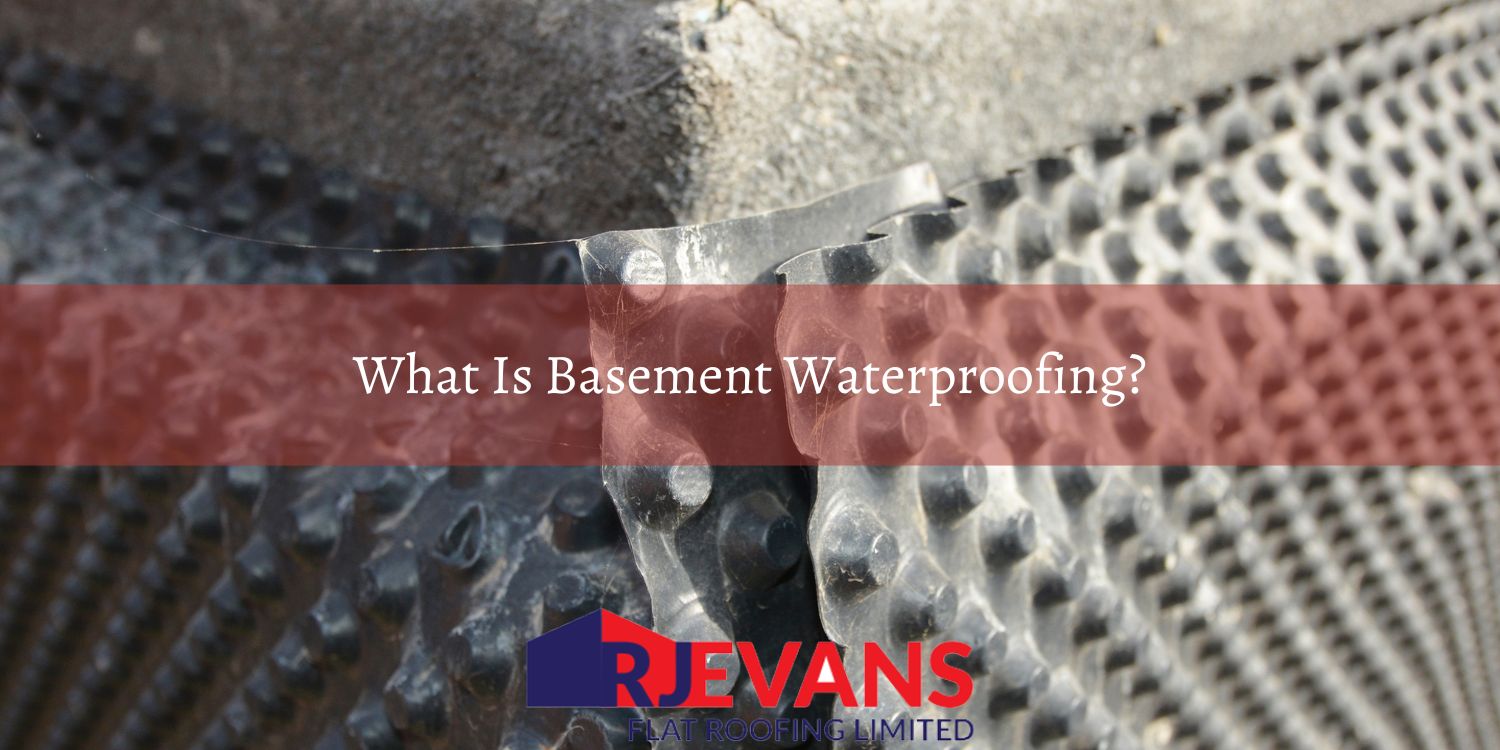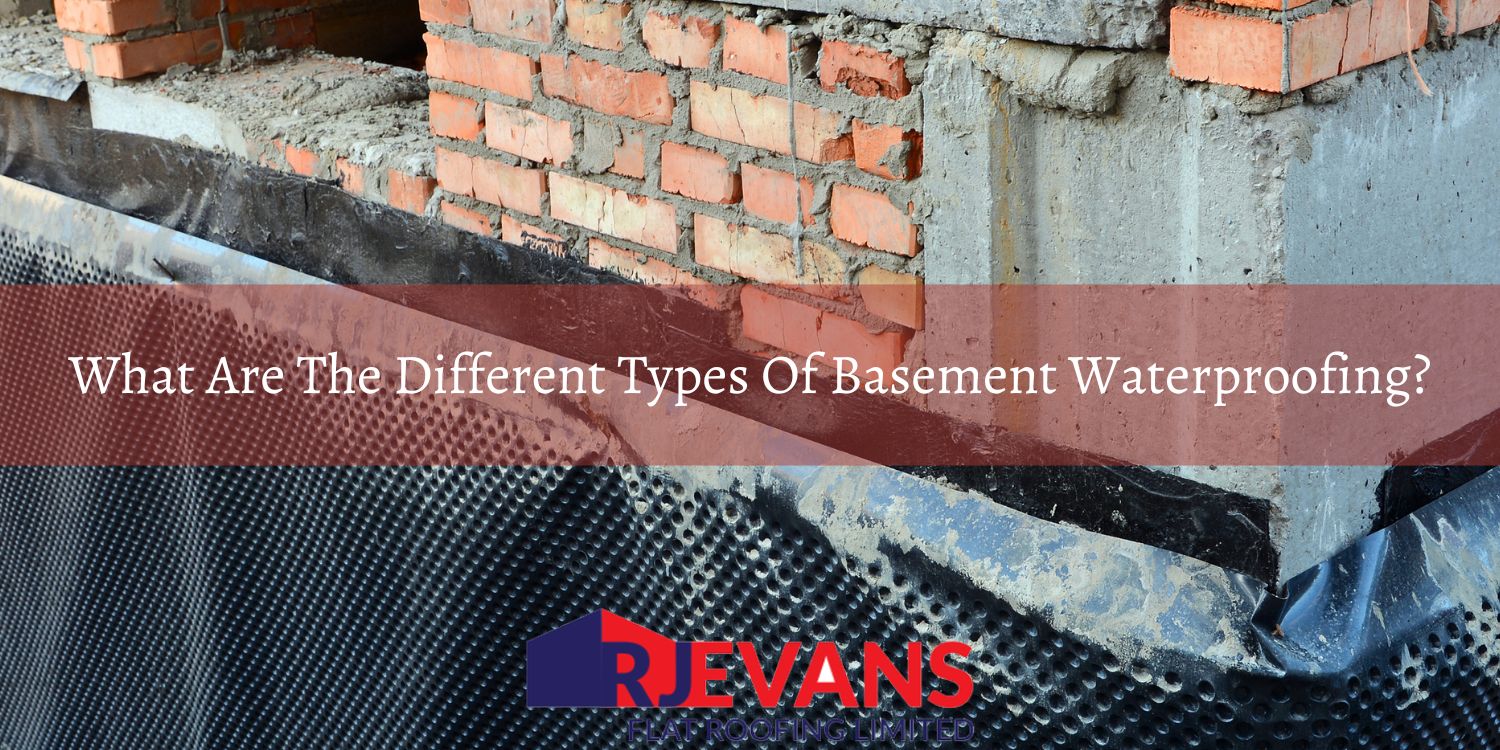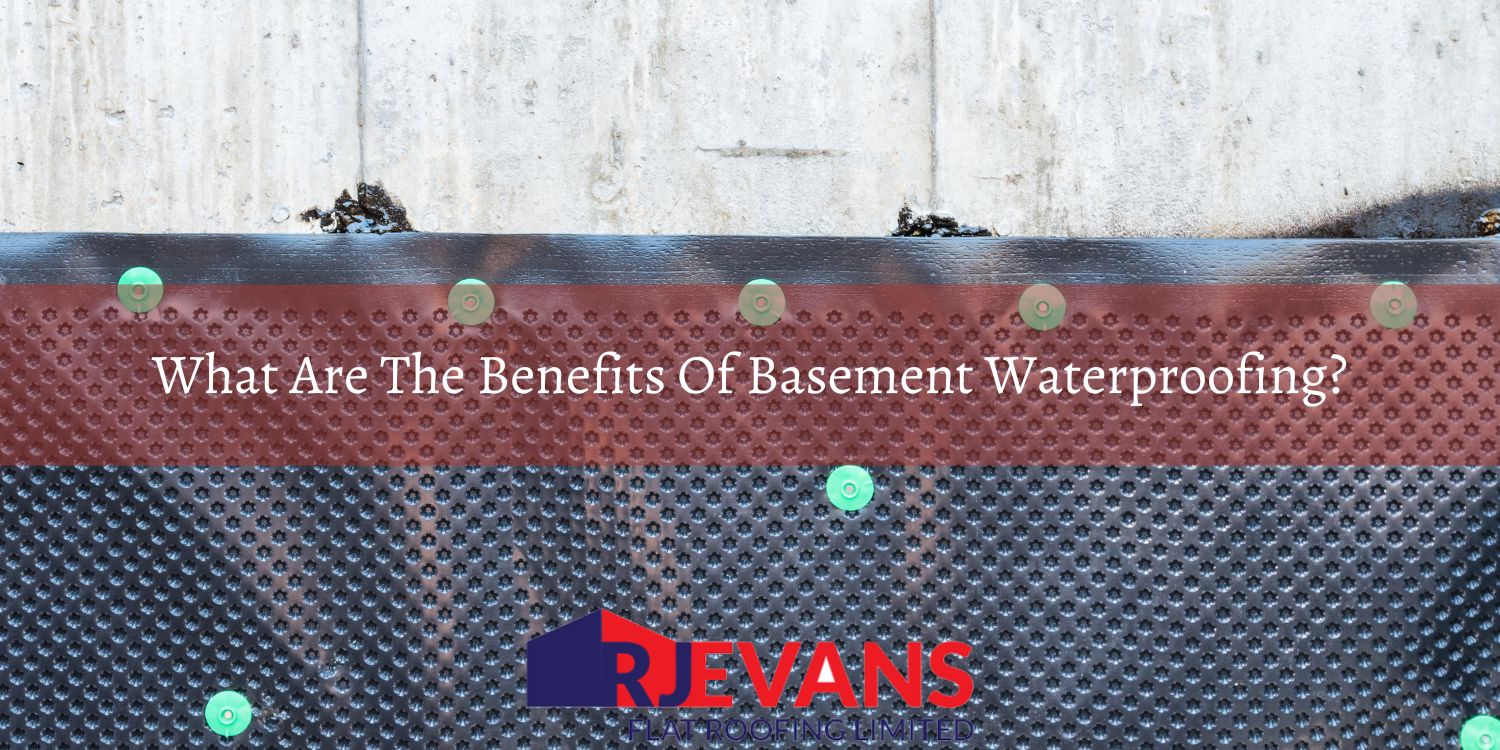I agree Our site saves small pieces of text information (cookies) on your device in order to deliver better content and for statistical purposes. You can disable the usage of cookies by changing the settings of your browser. By browsing our website without changing the browser settings you grant us permission to store that information on your device.

Basement waterproofing encompasses various methods and techniques used to prevent water from entering a basement. Waterproofing can include both internal and external approaches. External waterproofing often involves applying a waterproof membrane or coating to the outside walls and foundation of the building, along with proper drainage systems to redirect water away from the structure. Internal waterproofing might include the application of sealants, the use of water-resistant materials, and the installation of sump pumps or drainage systems inside the basement to manage any water that does penetrate.
At RJ Evans, we specialise in basement waterproofing services, ensuring your basement is fully protected from water ingress and damp issues. For more information or a quote, please contact us via our contact form or call us now on 01277 375 511. One of our friendly team members will be delighted to assist you.

Basement waterproofing is crucial for maintaining the integrity of structures, including car parks, which are often susceptible to water damage. It involves various methods and techniques designed to prevent water from infiltrating a basement, protecting the structural soundness of a building and ensuring a dry, usable space. This process can involve both internal and external strategies. External waterproofing typically includes applying a waterproof membrane or coating to the exterior walls and foundation of the building, creating a barrier against water ingress. It also involves installing effective drainage systems, such as French drains, to redirect water away from the structure, preventing it from penetrating the basement walls.
Internal waterproofing focuses on managing any water entering the building. This can be achieved by applying sealants to the interior walls and floors, using water-resistant materials, and installing sump pumps and internal drainage systems. Sump pumps are crucial in areas prone to high water tables, actively removing water that accumulates in a sump basin and pumping it away from the basement. Additionally, internal drainage systems help channel water to the sump pump, ensuring efficient water management.
Combining both internal and external waterproofing methods provides the most comprehensive protection. External measures stop water from entering, while internal solutions manage any potential leaks, ensuring the basement remains dry and functional. Effective basement waterproofing not only protects the structural integrity of a building but also enhances the living space, preventing issues like mould growth, structural damage, and loss of property value.
Basements are vulnerable to moisture due to their location below ground level, making them prone to water infiltration from surrounding soil. Poor drainage and inadequate waterproofing can lead to issues like seepage, leaks, and condensation, causing damage and mold growth.
Underground structures such as basements, cellars or vaults are always vulnerable to pressured groundwater penetrating through their structure; because of this, waterproofing systems are essential to stop basement areas from becoming damp, moist, uninhabitable spaces.
Whilst lots of us seek to expand our living spaces the decision to go under the ‘water table’ (turning a basement or cellar space into an extra room) means we are entering a space that is under hydrostatic pressure produced by water in the ground surrounding the building. Unfortunately, if waterproofing is not in place the pressure of the water against the outer walls and floors of the structure can cause cracks or leaks that will then lead to damp issues inside basements.
Of course, there are many factors affecting the level of water pressure and thus the level of dampness a basement or cellar is likely to endure through the course of its life, these include the type of building, the depth it reaches, its location and the composition of the surrounding soil. These factors are things that have to be assessed by a specialist and directly affect how they will design the waterproofing system to create an effective barrier, whilst also meeting with British standards; BS8102(2009).

When it comes to protecting your basement from moisture, knowing the different types of waterproofing methods can make all the difference. Each method has its unique benefits, tailored to fit your specific structural needs and water intrusion challenges. Let's dive into three main types of basement waterproofing: Type A (Tanking), Type B (Integrated), and Type C (Water Management).
Tanking is a renowned method of waterproofing that has been used in the industry for many years. It is in essence a physical barrier that is applied to the basement or cellar walls to stop any moisture entering. This method of waterproofing is a barricade that can be applied internally or externally to a structure to act as a defence against the penetration of ground water.
There are many different approaches and products for creating a Type A waterproofing system including mastic asphalt. It is essential that thorough assessment of the structural needs be carried out by specialist during the design stage. This will enable specialists to determine which approach and what materials are most suitable to produce a structure strong enough to endure the level of ground water pressure it will face. However, typically the barrier they design can comprise of crystalline slurries, sheet membranes, multi-coat renders and bitumen-based coatings.
Most commonly used as a waterproofing system for a concrete new build property, this type of waterproofing is intrinsic within the structure. To strengthen and protect the structure, waterproofing additives are added during the building process to the concrete and the building also has hydrophilic waterproofed junctions and construction joins; this is because the joints of a structure are typically the weaker spot in a building and thus more prone to water ingresses. To minimise risk of water penetrating the basement, a Type B system of water proofing is typically backed up by combining Type A or C of waterproofing into its design.
Often referred to as a Cavity Drain Membrane (CDM) this third type of waterproofing is a system that installs either internally or externally dimpled membranes into the walls and floor of basement together with a series of drainage channels and sump pumps. Any incoming water is then diverted through the channels and into a pumping chamber, thus effectively keeping it away from the internal living space. What is great about this system of waterproofing is that it is suitable for all structure types and can be used in pre-existing basements renovations and basement flats that come under pressure from water ingresses.

Basement waterproofing provides vital protection against water damage, keeping your home safe from structural issues and health hazards like mould and mildew. Plus, it boosts property value, transforms your basement into a cosy living space, and keeps pests at bay. It’s a smart, essential investment for any homeowner.
In car park basements, waterproofing is vital for maintaining structural integrity. By preventing water from entering the basement, it avoids cracks and erosion which can undermine the structure. This is particularly significant in the UK, where heavy rainfall and damp conditions are frequent. A solid foundation ensures the longevity and stability of the entire property, saving you from expensive repairs down the line.
Waterproofing car park basements effectively stops the growth of mould and mildew, which flourish in damp environments. These fungi can cause serious health issues, including allergies and respiratory problems, and can also harm your belongings. In the UK’s humid climate, mould prevention is particularly important. A dry basement promotes a healthier environment for users and maintenance staff.
Waterproofing car park basements significantly boosts the value of the property by adding usable, functional space and lowering the risk of future water damage. Potential buyers in the UK appreciate the added security of a dry, protected basement. This investment not only enhances the property's appeal but also ensures a higher resale value, making it a smart financial choice.
In car park basements, waterproofing can greatly enhance the available space. Waterproofing transforms basements into functional, liveable areas such as family rooms, offices, or guest bedrooms. This additional space is particularly valuable in the UK, where living space is often limited and highly sought after. By ensuring the basement stays dry and free from moisture, homeowners can confidently convert this under-utilised area into a comfortable and versatile part of the home. A well-finished basement can significantly improve the overall living experience and add to the home's utility..
Waterproofing car park basements effectively prevents pest infestations, which can be a major issue in damp environments. A dry basement is less likely to attract pests like woodlice, rats, and insects, which thrive in moist conditions and can cause further harm. Waterproofing helps maintain a healthier and more secure living environment by eliminating the damp conditions attracting these pests. In the UK, where damp conditions are common, keeping your basement dry is crucial for preventing infestations and protecting the health and safety of your home. This not only preserves the integrity of your property but also provides peace of mind.
If you would like RJ Evans to help you with a quotation or any information about your basement waterproofing project please get in touch with us or call us now on 01277 375 511. One of our friendly basement waterproofing specialists will be happy to assist you.
BS8102(2009): The UK code of practice for underground structures outlining guidelines and recommendations on how structures are protected against groundwater. All waterproofing systems must adhere to the standards outlined by BS8102(2009).
Capillary Action: The ability of water to move through porous materials or narrow spaces, contributing to rising damp in basements.
Cavity Drain Membranes (CDM): Studded membranes installed on walls and floors to manage water ingress by directing it to a drainage system.
Cold Applied Liquid Systems: Liquid waterproofing systems applied in a liquid form and cure at ambient temperatures, creating a seamless barrier.
Crystalline Waterproofing: A chemical treatment applied to concrete, causing a reaction filling and sealing capillaries and cracks to prevent water penetration.
Damp Proof Course (DPC): A barrier typically installed at the base of a building’s walls to prevent rising damp from the ground.
Damp Proof Membrane (DPM): A sheet of material applied to floors and walls to prevent moisture penetration.
Ground Water: Water found underground and stored in the soil and cracks; the direction this water moves depends on the topography of the local area. With heavy rainfall, the ground water level increases, making it more likely to saturate the topsoil and join the water table.
Hydrostatic Pressure: The pressure given from a fluid matching the force of gravity, creating an equilibrium.
Hydrophobic: Refers to materials or substances repelling water, commonly used in waterproofing solutions.
Negative-Side Waterproofing: Waterproofing applied to the interior side of a structure to prevent water penetrating the substrate from entering the space.
Perimeter Drainage System: A system of pipes and drains installed around the perimeter of a basement to redirect water away from the foundation.
Positive-Side Waterproofing: Waterproofing applied to the side of the structure where water pressure is present, typically the exterior side.
Substrate Preparation: The process of preparing the surface to be waterproofed, ensuring it is clean, dry, and suitable for the application of waterproofing materials.
Sump Pump: A pump installed in a basement's lowest point to remove accumulated water, typically used in Type C waterproofing systems.
Vapour Barrier: A material used to resist the diffusion of moisture through walls, floors, and ceilings.
Water Table: An underground boundary separating the groundwater area from the soil surface; water table levels change year to year.
The factors influencing quotes for basement waterproofing are the style and size of the structure and also the type of waterproofing that is needed. Please do not hesitate to contact us for further information we will be happy to assist you with any questions and discuss your basements requirements.
Most basement waterproofing systems come with a 10-year guarantee as long as it has been maintained and serviced as outlined in the manufacture handbook. Should you want further reassurance guarantees can also be underwritten by a third-party insurer.
To determine which basement waterproofing system is right for your property, you should first assess the specific moisture issues and structural conditions you face. Consulting a professional who can conduct a thorough site evaluation will help identify the most suitable solution, whether it be Type A (Tanking), Type B (Integrated Systems), or Type C (Drained Cavity Systems). They will recommend the best approach based on factors such as water pressure, soil conditions, and your property's unique needs.
A cavity drain system is a waterproofing solution using studded membranes on basement walls and floors to manage water ingress. It channels water into drainage channels and sump pumps, which then direct the water away from the building, keeping the interior space dry and safe from moisture.
Yes, there is a difference between basement waterproofing and tanking. Basement waterproofing includes various methods to prevent water ingress, using both external and internal solutions. Basement tanking specifically involves applying a waterproof barrier directly to the walls and floors, creating a completely watertight environment to protect against moisture.